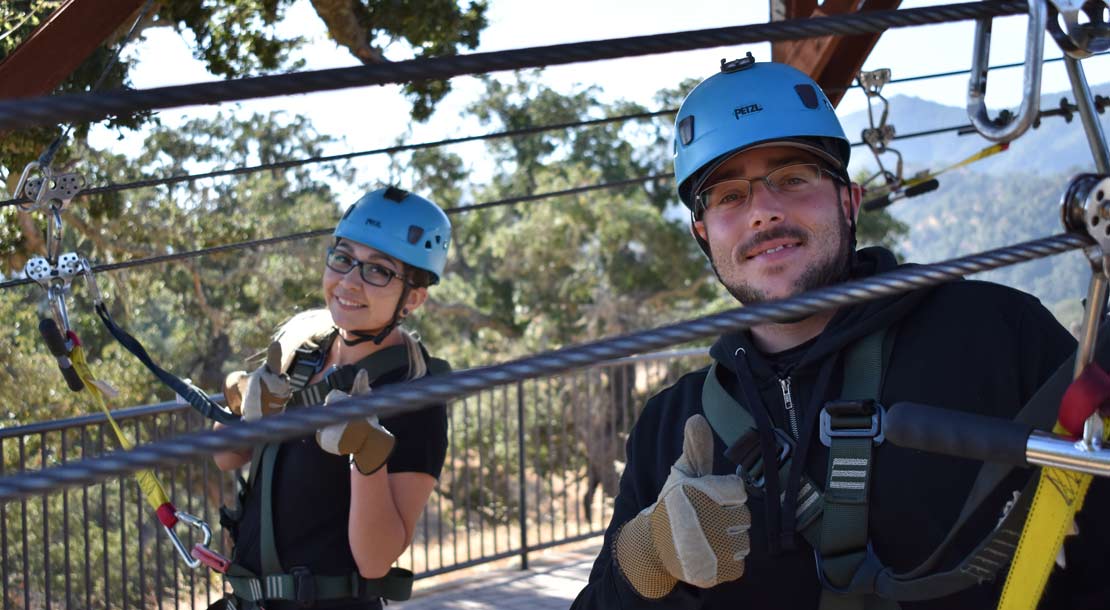The weight limit for ziplining typically ranges from 200 to 275 pounds, depending on individual zipline specifications and safety regulations. Ziplining is an exhilarating adventure activity that has gained immense popularity in recent years.
It involves traversing through a series of cables or ropes attached between two fixed points, propelled by gravity or a harness system. However, one of the most crucial aspects of ziplining is ensuring safety and minimizing risks. In this regard, every zipline operator sets a weight limit for their equipment to ensure the safety of the participants and maintain the long-term viability of the equipment.
While the weight limit varies depending on factors such as age, height, and other safety requirements, it is generally accepted that the weight limit for ziplining is between 200 and 275 pounds. Beyond these limits, safety concerns can arise, leading to equipment failure or other unforeseen incidents. Therefore, it is critical to adhere to the weight limit guidelines provided by the zipline operator to make the most of this thrilling adventure sport.

Credit: www.margarita-adventures.com
What Are Ziplines And How Do They Work?
Ziplines: An Adventure Sport On The Rise
Ziplining is becoming an increasingly popular adventure sport. It provides a thrilling experience that combines the exhilaration of free-falling with the beauty of nature. Essentially, a zipline consists of a cable stretched between two points, with a harness that enables riders to glide along the cable.
This article will delve into how ziplines work, including the mechanics of ziplining and how weight affects performance.
The Mechanics Behind Ziplining And How Weight Affects Performance
Ziplining may look simple, but there is much more to it than just sliding down a cable. The following are the mechanics behind ziplining:
- In ziplining, gravity provides the necessary force to propel you along the cable.
- The steeper the angle of the cable, the faster the rider will travel.
- Riders control their speed by applying friction through the use of a braking system.
Weight is an important factor that affects ziplining performance. It directly influences the speed at which a person travels down the zipline. A few key takeaways about weight and ziplining include:
- The heavier the rider, the faster they will go down the zipline. This is due to gravity providing more force on the rider.
- The weight of the rider is also a consideration for zipline operators, as it is necessary to ensure the cable and other zipline components can support differing rider weights.
- Operators may impose a weight limit for riders to prevent any risks to zipline safety.
Zipline Safety Protocols
Zipline safety is paramount. To ensure a safe and enjoyable experience, riders must follow basic safety protocols. These protocols include:
- Wearing protective gear, such as a helmet and harness, and ensuring they are properly fitted.
- Conducting a safety check of the zipline before use.
- Respecting weight restrictions and any other guidelines provided by the zipline operator.
- Using proper braking techniques to control speed throughout the ride.
Ziplining is an exciting outdoor activity that requires an understanding of the mechanics and safety protocols. By knowing how it works and adhering to safety guidelines, riders can fully enjoy the thrill of this popular adventure sport.
How Is Weight Limit Determined?
Factors That Affect Weight Limit For Ziplines
Ziplining is an exhilarating adventure, but it’s important to remember that it’s not without risks. To ensure maximum safety and enjoyment, zipline operators set weight limits. Here are some factors that influence how weight limits are determined:
- #### zipline construction and materials used
The weight capacity of a zipline is influenced by factors such as the type of materials used, construction method, and overall design. Some ziplines are constructed for children, while others are specifically designed to carry adults. Operators will often take into account factors such as weight distribution, cable diameter, and tensile strength when determining weight limits.
- #### types of braking systems employed
Different braking systems are used to slow down or stop riders on ziplines. The type of braking system employed can impact weight limits. Hand-braking systems, for example, may have a lower weight limit than automatic or magnetic braking systems.
- #### weather conditions and other external factors
External factors such as changes in temperature, humidity, and wind speed can have an impact on the weight limit of a zipline. In wet or rainy conditions, for example, the weight limit may be reduced due to the reduced grip of the cable.
It’s important to follow zipline weight limits to ensure safety. Exceeding the specified weight limit can put undue stress on the cable, pulleys, braking system and even the rider’s harness. By doing so, the risk of an accident or malfunction significantly increases.
Always double-check the weight limit of a zipline to ensure a safe and enjoyable ride.
Frequently Asked Questions For What’S The Weight Limit For Ziplining?
What Is The Weight Limit For Ziplining?
The weight limit for ziplining varies between 250-300 lbs, depending on the zipline.
Do I Need To Be A Certain Age To Zipline?
There is no specific age limit for ziplining, but children under 18 may need a guardian’s permission.
What Should I Wear For Ziplining?
Wear comfortable clothes and closed-toe shoes suitable for outdoor activities. Avoid loose clothing or dangling accessories.
Conclusion
Based on the information provided in this article, it is clear that ziplining is an exciting activity that is enjoyed by many people around the world. While it is a thrilling experience, it is important to note that there are weight restrictions that individuals must abide by.
Zipline operators have set these restrictions to ensure that everyone involved in the activity is safe. It is essential to adhere to these weight limits as they are determined by the manufacturer and have been tested and certified to ensure maximum safety.
It is recommended that potential zipliners confirm the weight limit with their chosen operator before booking a zipline adventure. Ziplining can be an unforgettable adventure for everyone who is interested and excited to participate. By being aware of and following the weight limit restrictions, individuals can ensure that they have a safe and enjoyable experience.



